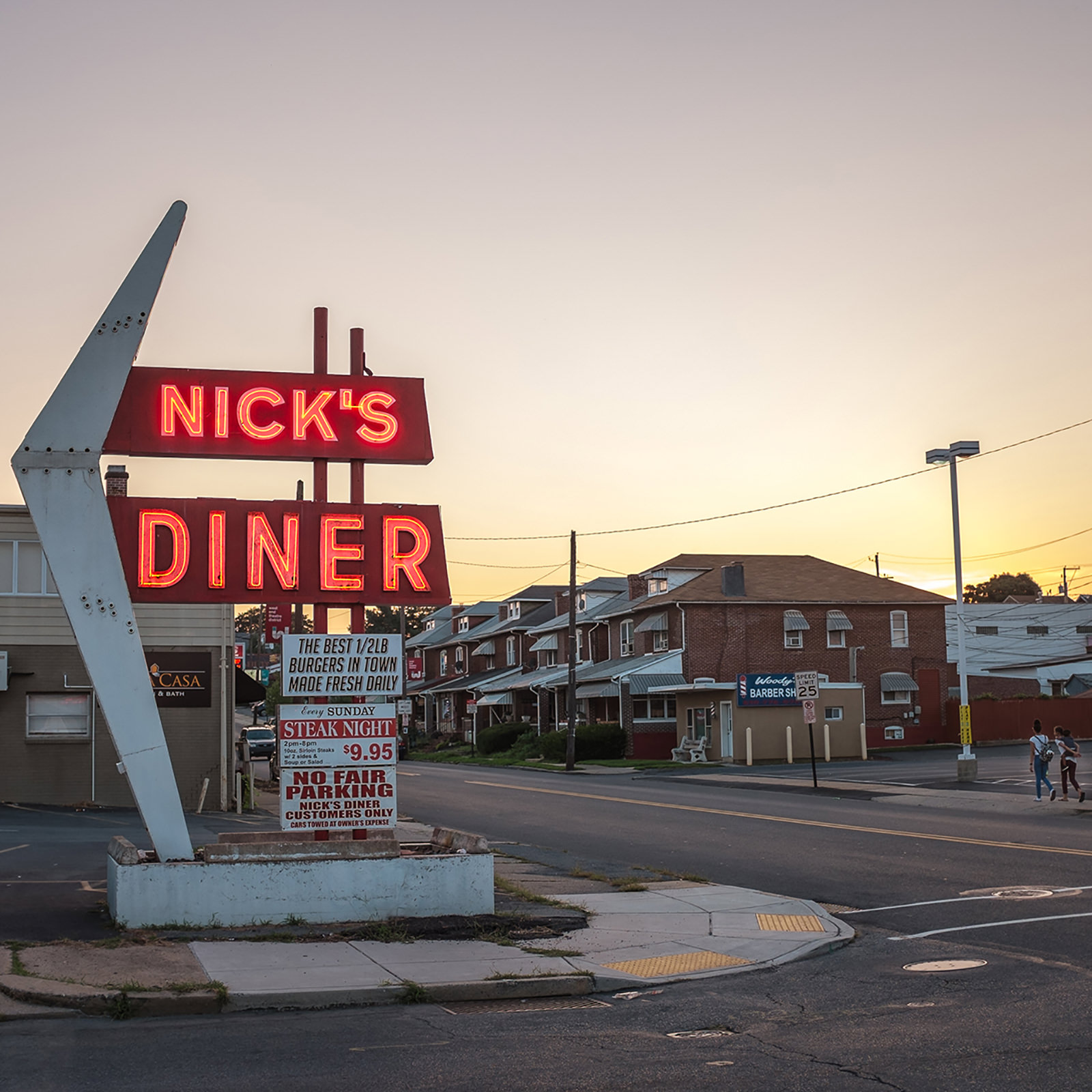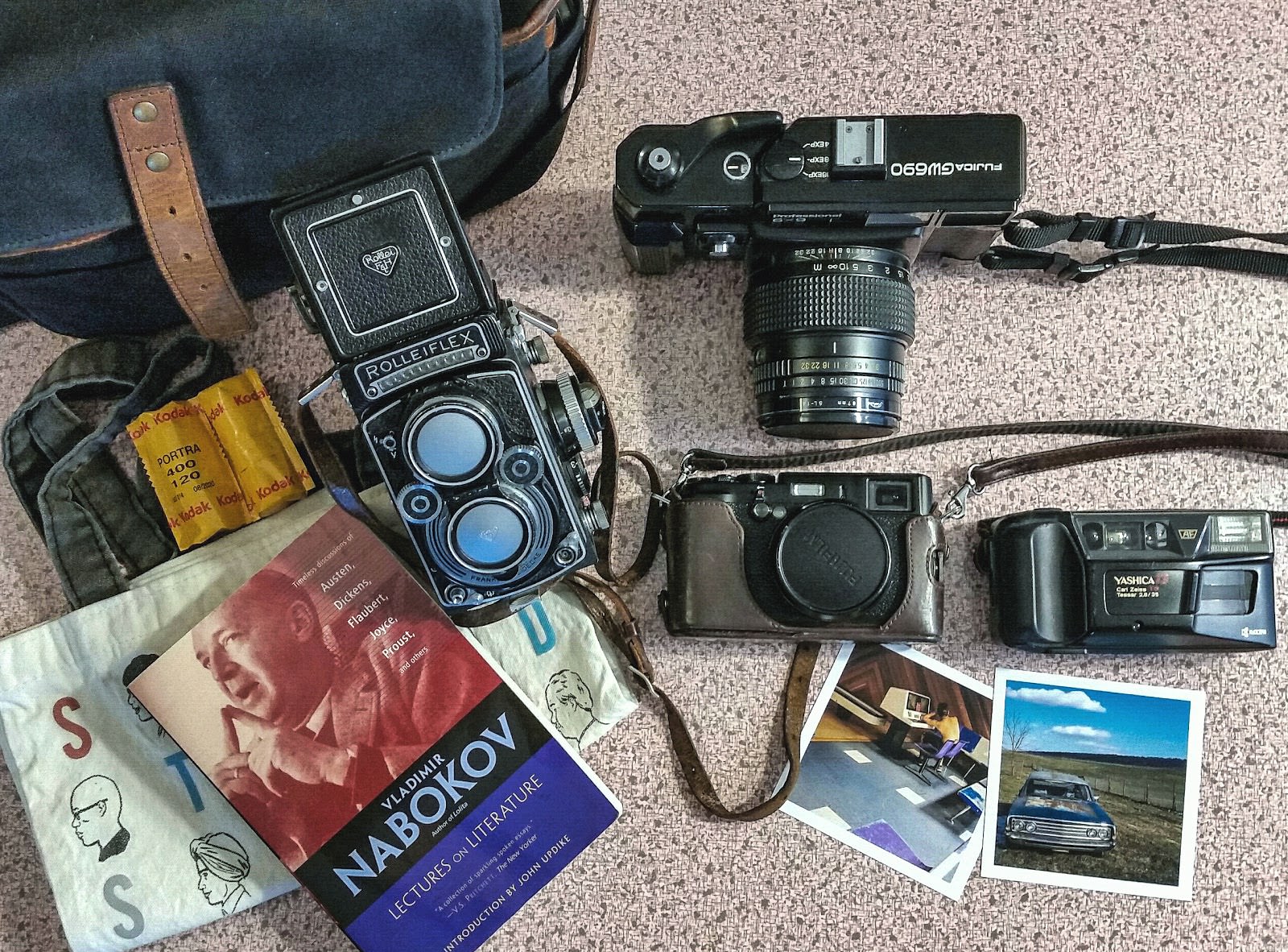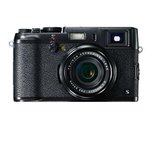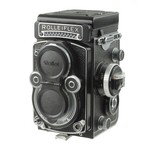
The Simple Equipment Leah Frances Uses to Showcase “Americanness”
With minimal gear that generally fits inside a small canvas tote, photographer Leah Frances has garnered international acclaim for her Instagram series, American Squares. Born and raised on Vancouver Island, British Columbia, Leah cites her proximity to the United States and a “steady diet of mid-century cinema” as the basis for her fascination with the culture of “Americanness.”
Since moving to Pennsylvania, Leah has continued to explore concepts of identity, perception, and history through her photography. Her images capture quiet, everyday moments of life – familiar scenes that evoke feelings of nostalgia and tenderness – that recall some of the more idyllic perceptions of what American life is, or what it used to be.
This glimpse inside Leah’s stripped-down camera bag gives us some insight into her gear of choice to immortalize this distinct mythology of Americana.
My gear is fairly minimal. I’m only beginning to shoot on assignment, so up until now, I’ve made photographs in my own way and on my own time and thus haven’t had a need for a lot of equipment. I think folks are sometimes skeptical of my setup.
I’ll use film in any situation that I can, but if I’m making a photograph of people on the fly, digital is a little bit easier. In general, though, I do try to use the Rolleiflex 3.5F, because I know I can print basically as large as I want – I have a few potential gallery shows on the horizon.
CAMERAS
Fujifilm X100S: This is the camera I bought when I got back into photography as an adult, around 2013, and I am still using it, which goes to show how tough it is! One reason I love it is because it’s small. As they say, the best camera is the one you have with you. I trust in the Fujifilm leather case, so I have that camera rattling around in my tote bag at all times.
Also, it’s funny, but because it has a smaller (16.3MP) sensor than the new Fujis (26.1MP), I’m able to get a wider depth of field in low light, or when shooting indoors without a tripod. I enjoy that quirk, so even if I am able to upgrade, I will definitely continue to use the X100S until it stops working, for certain situations.
I also love it because, by this point, I know it inside and out. I always shoot manually, and I know what it is going to do and what situations the 23mm f/2 fixed lens will handle best. Interior photography is a specialty of mine, and hand-holding this gets great results in pretty much any lighting situation.
Rolleiflex 3.5F: First and foremost, I love the act of making a photograph with this camera. Looking through the ground glass into that glowing square is a kind of pure magic that enhances the elation I already feel while out photographing the world. On top of that, the Xenotar 75mm f/3.5 lens is special: sharp, but not overly so; it has a kind of dreamy atmospheric quality that’s hard to describe. The Rollei is also surprisingly small and incredibly light, with a near-silent shutter which makes it more stealthy than one might expect. I also find the TLR focusing system forces me to slow down and really concentrate. With this camera, I usually only take one picture of any scene I’m hoping to capture.
Fujica GW690: Otherwise known as the “Texas Leica” or “the brick,” this leaf-shutter fixed-lens rangefinder camera has a certain heft that’s fun to hold and use. I bought it because I read Mark Steinmetz uses it – he’s one of my favorite photographers – and I had never seen anyone capture light as beautifully as he does. The EBC Fujinon 90mm f/3.5 lens is tack sharp, like nothing else I’d experienced previously. When I got my first roll of film developed, I was blown away. I had practiced using the rangefinder focusing system on a peacock, and I had never seen as much detail on them with my naked eye.
Right now, I’m not using this camera as much, because I’m not shooting in 2:3 format. But I will in the future.
Bonus: the 6×9 negatives are, I believe, some of the largest medium format negs around.
Yashica T3: This is my fun camera for parties or casual shooting. It’s auto everything, but it has a beautiful Carl Zeiss T* 35mm f/2.8 lens. My photos turn out well in pretty much every situation, and it takes wonderful portraits.
LENSES
I decided on fixed lenses because I personally find (or hope) that “zooming with my feet” lends a sense of immediacy to my work. The viewer has the exact vantage point of where I was standing when I made the picture. I always compose in camera; I don’t crop, or crop very minimally, after the fact.
LIGHTING
I also don’t use a flash because I love natural light and, shooting my own personal work, I have the advantage of planning for and waiting for the light I want. I do enjoy some photographers that take full advantage of flash; I just wasn’t drawn to making those pictures for myself, at least not yet.
BAG
To be honest, my most commonly-used camera bags are cotton tote bags, because I’ll throw my FujiX100S or my Yashica T3 into basically anything I’ve got around. I like to carry tote bags from independent bookstores, coffee shops or publishers.
When using my Rolleiflex, I carry an ONA Bowery camera bag. It was the least expensive, least flashy, least “camera-bag-looking” and yet most protective thing I could find. I walk through a lot of different areas and I don’t like advertising that I am taking pictures. In other words, it doesn’t attract attention and it doesn’t necessarily look like a camera bag.
I’m also on the hunt for a Rollei Tropical metal case which is completely water and humidity proof.
MISCELLANEOUS ITEMS
I regularly print small, 4×4 proofs of my pictures for editing purposes. I often carry around stacks of these. I’ll look at them on the subway, the bus, wherever. I’m working on a book, and the editing and sequencing is always on my mind – these are often in my bag. I also take much inspiration from a Vladimir Nabokov’s lecture, The Art of Literature and Commonsense. I frequently carry this with me and refer to it.
Leah’s timeless American Squares series was recently included in T: The New York Times Style Magazine’s “Five to Follow”. Her work has also been published by Us of America Magazine, the SFMoMa blog, Format Magazine, Feature Shoot, frankie magazine, Hemispheres Magazine, and more. To see more of Leah’s work, visit her website or follow American Squares on Instagram.





















